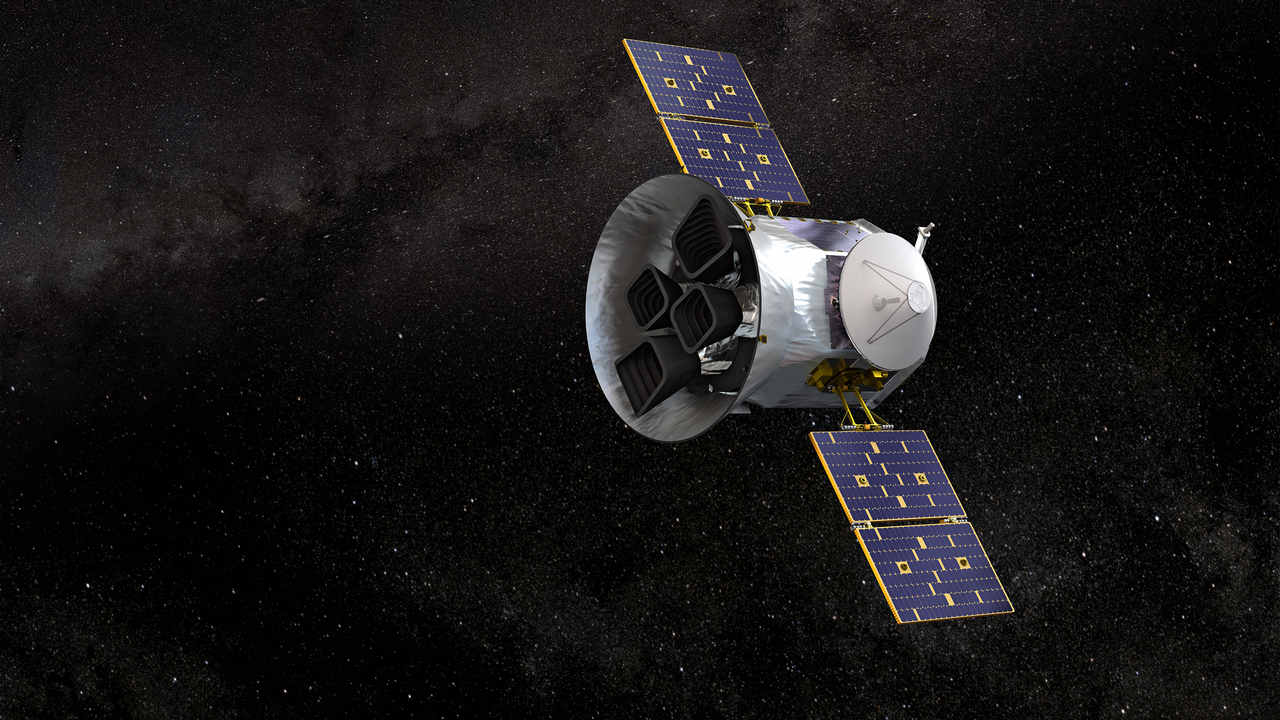Direct observations from a NASA space telescope have for the first time revealed the atmospheric void of a rocky, Earth-sized world beyond our own solar system orbiting the most common type of star in the galaxy, according to a study released on Monday. The research, published in the scientific journal Nature, also shows the distant planet’s surface is likely to resemble the barren exterior of the Earth’s moon or Mercury, possibly covered in dark volcanic rock. The planet lies about 48.6 light-years from Earth and is one of more than 4,000 so-called exoplanets identified over the past two decades circling distant stars in our home galaxy, the Milky Way. Known to astronomers as LHS 3844b, this exoplanet about 1.3 times the size of Earth is locked in a tight orbit — one revolution every 11 hours — around a small, relatively cool star called a red dwarf, the most prevalent and long-lived type of star in the galaxy. [caption id=“attachment_7192441” align=“alignnone” width=“1280”] An artist illustration of the exoplanet that has been spotted by the space telescopes. Image credit: NASA/JPL[/caption] The planet’s lack of atmosphere is probably due to intense radiation from its parent red dwarf, which, though dim by stellar standards, also emits high levels of ultraviolet light, the study says. The study will likely add to a debate among astronomers about whether the search for life-sustaining conditions beyond our solar system should focus on exoplanets around red dwarfs - accounting for 75 percent of all-stars in the Milky Way — or less common, larger, hotter stars more like our own sun. The principal finding is that it probably possesses little if any atmosphere — a conclusion reached by measuring the temperature difference between the side of the planet perpetually facing its star, and the cooler, dark side facing away from it. A negligible amount of heat carried between the two sides indicates a lack of winds that would otherwise be present to transfer warmth around the planet. “The temperature contrast on this planet is about as big as it can possibly be,” said researcher Laura Kreidberg of the Harvard-Smithsonian Center for Astrophysics in Cambridge, Massachusetts. She is the lead author of the study. [caption id=“attachment_7192461” align=“alignnone” width=“1280”]
 NASA’s newly launched Transiting Exoplanet Survey Satellite (TESS). image credit: NASA/JPL[/caption] The similar analysis previously was used to determine that another exoplanet, 55 Cancri e, about twice as big as Earth and believed to be half-covered in molten lava, likely possesses an atmosphere thicker than Earth’s. This exoplanet, unlike LHS 3844b, orbits a sun-like star. The planet in the latest study was detected last year by NASA’s newly launched Transiting Exoplanet Survey Satellite, an orbiting telescope that pinpoints distant worlds by spotting periodic dips in the light observed from their parent stars when an object passes in front of them. But it was follow-up observations from another orbiting instrument, the Spitzer Space Telescope, which can detect infrared light directly from an exoplanet, that provided new insights about its features.
NASA’s newly launched Transiting Exoplanet Survey Satellite (TESS). image credit: NASA/JPL[/caption] The similar analysis previously was used to determine that another exoplanet, 55 Cancri e, about twice as big as Earth and believed to be half-covered in molten lava, likely possesses an atmosphere thicker than Earth’s. This exoplanet, unlike LHS 3844b, orbits a sun-like star. The planet in the latest study was detected last year by NASA’s newly launched Transiting Exoplanet Survey Satellite, an orbiting telescope that pinpoints distant worlds by spotting periodic dips in the light observed from their parent stars when an object passes in front of them. But it was follow-up observations from another orbiting instrument, the Spitzer Space Telescope, which can detect infrared light directly from an exoplanet, that provided new insights about its features.
The exoplanet is 1.3 times larger than Earth and is locked in a tight orbit around a small, relatively cool star.
Advertisement
End of Article


)
)
)
)
)
)
)
)
)



